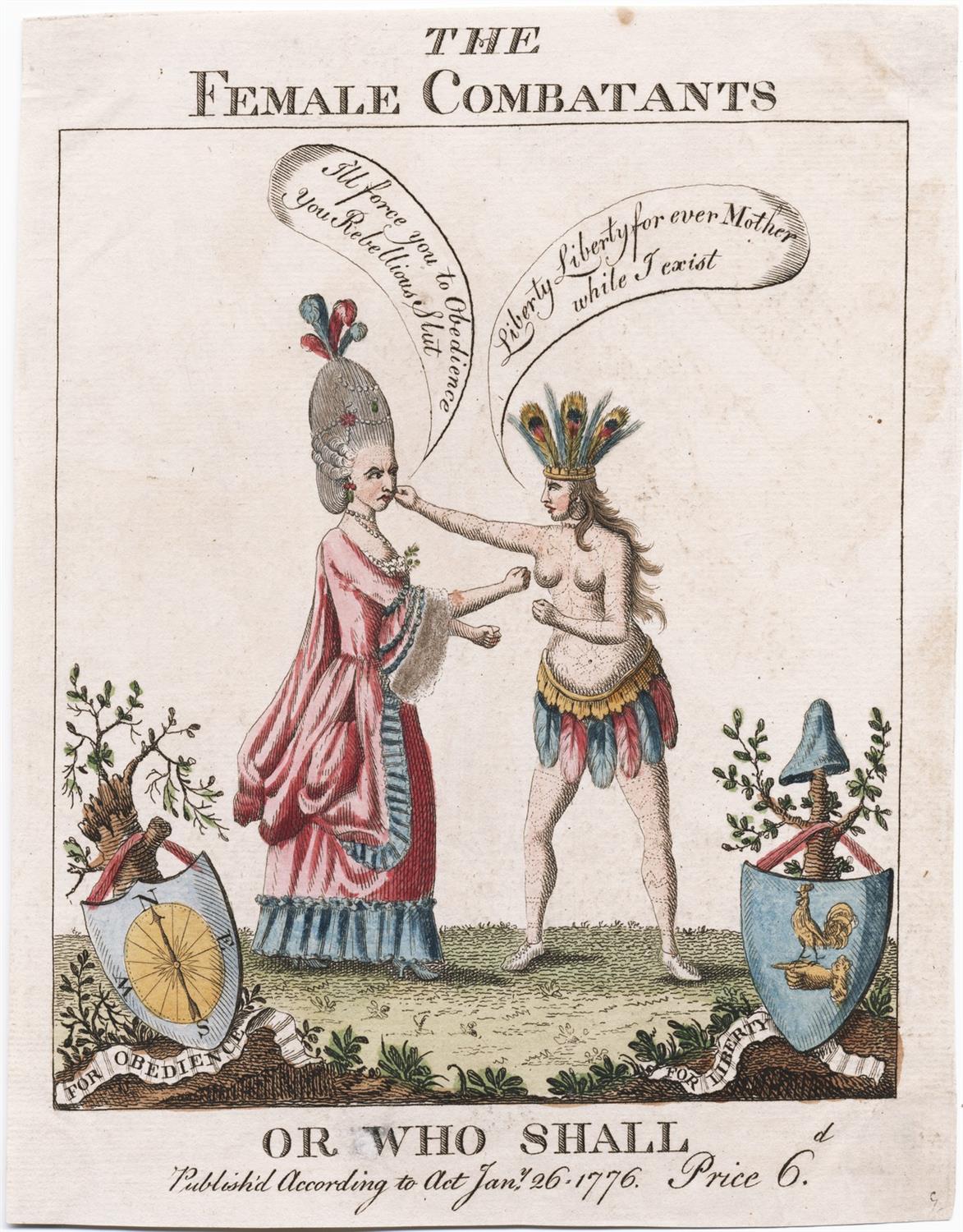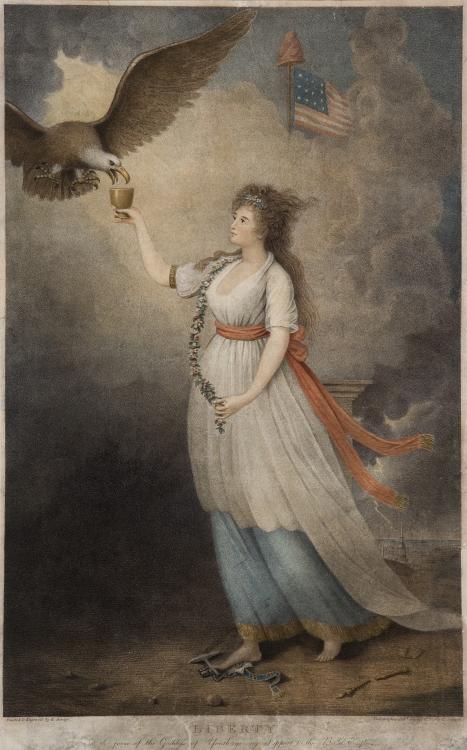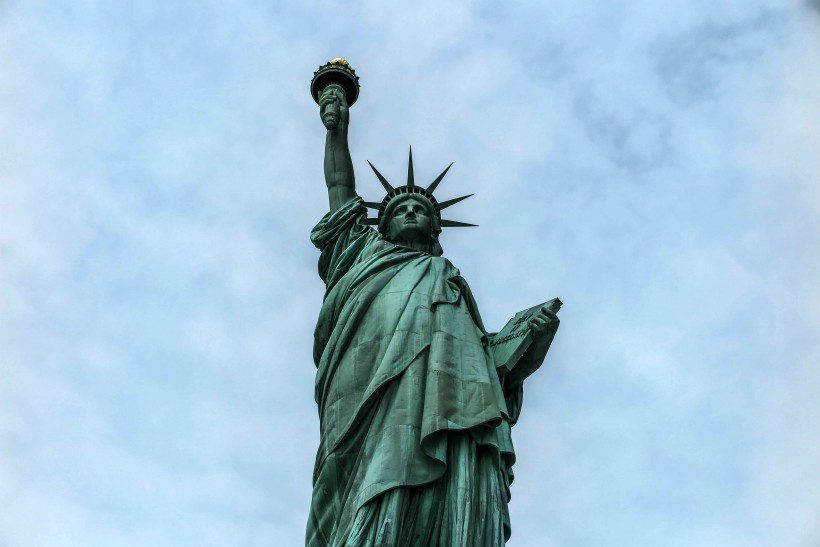Wherever people go, they carry their cultural beliefs and traditions. And their gods. And gods emerge and are forgotten and are rediscovered and reshaped.
The first inhabitants of North America migrated from Siberia at least 15,000 years ago. Many gods arrived and emerged between then and the settlement of Europeans. Waves of immigrants from all over the world brought more gods. While the loudest conservative voices proclaim that the United States is a Christian nation, many gods are worshipped in America and the symbols of paganism are plentiful, most obviously in the Greek and Roman architectural styles of many great public buildings. And one of the nation’s greatest symbols is a Roman goddess.
During our recent trip to the U.S., my husband and I went to New York City. It was my second trip there, but my first time visiting the Statue of Liberty. If you’ve never seen her in person, let me tell you, yes, she is that impressive and beautiful. I know the Statue of Liberty was based on Libertas, the Roman personification of liberty. As I stood at her feet, she struck me as the most culturally relevant American goddess we have right now.
European Exoticism
The United States has had a pantheon of goddesses. The Statue of Liberty is a late addition. In 1575, the French engraver Étienne Delaune created four prints with allegorical representations of the four parts of the world. Europe was the most illustrious and cultivated to denote her superiority; America was the most barbaric. Her bow and arrow and animal companion suggest Artemis/Diana may have inspired the representation. In 1779, using earlier drawings by Cesare Ripa, the Scottish draftsman George Richardson represented America in similar fashion.


Unlike Europe, Asia, and Africa, America, this new and savage thing, was depicted partially or completely nude. Well, more naked than the others. The European taste for Exoticism gave way to representing America as a native of the New World. While England was often depicted with a crown, America wore a feather headdress. The young daughter became the Indian Princess (with unironic European features). When America began to fight for its independence from England, America went from noble savage to rebellious slut.

American Goddess
Early allegorical images of America were born in the mind of Europe. Around the Revolution, America began taking charge of its symbols. To shed its native identity and connect to the “civilized” world, artists reached into the iconographic heritage of classical humanism. In the European tradition of personifying nations as pseudo-classical goddesses, America embraced Columbia, which had begun appearing in magazines in 1738. Columbia referred to place, but another goddess referred to principle: Liberty.

In 1796, Edward Savage created one of the most popular images of her, an engraving titled “Liberty. In the form of the goddess of youth, giving support to the bald eagle.” The summary in the Library of Congress reads:
An allegory of American liberty. Liberty, represented by a maiden in the form of the goddess Hebe, offers a cup to an eagle descending from the upper left. With her right foot she treads on chains, a scepter, a key, and other implements of tyranny. At the lower right, beyond a pedestal or altar, the town of Boston is visible, with lightning in the sky overhead.
Columbia and Liberty look a lot alike in art. Both were used in political cartoons for a variety of issues including the call for women’s right to vote, the abolition of slavery, and the defense and protection of immigrants, a theme that would endure. As Roman-inspired figures, Columbia and Liberty lacked organic rootedness. The Indian wars horrified Americans while the new literature of the frontier fascinated them, and the image of the Indian Princess was resurrected in a new, subservient role. Here, she aided whites, made peace with them, and even married them. In fabled figures like Hiawatha and Pocahontas, America found its symbols of rootedness and continuity. Nevermind their real stories or the genocide of Native Americans.

The Mother of Exiles
Because of oppression and enmity, her cultural inferiority, and her subservient role, the Indian Princess could never become a primary symbol of America. Columbia stood a good chance. The national capital was named after her as were streets, towns, and institutions. The songs “Hail, Columbia” and “Columbia, the Gem of the Ocean” were among the unofficial anthems until 1931, when “The Star-Spangled Banner” was officially named the national anthem. “Hail, Columbia” is still used as the ceremonial entrance march of the Vice President of the United States. But a French man had an idea that would cement Liberty as the most recognisable and enduring personification of America.
Dedicated on 28 October 1886, La Liberté éclairant le monde, or Liberty Enlightening the World, was a gift from the people of France to the people of the United States. The project is traced to Édouard René de Laboulaye and French sculptor Frédéric Auguste Bartholdi. Laboulaye was a prominent and important political thinker of the time. A staunch abolitionist, he was the president of the French Anti-Slavery Society, a careful observer of American politics, and an admirer of the U.S. Constitution. Libertas was the obvious choice to express the idea of American liberty. In ancient Rome, Libertas had been widely worshipped among emancipated slaves and she was well-established in the U.S., adorning coins and appearing in popular and civic art.
Fundraising for the statue began in 1882. For an auction of art and manuscripts, poet Emma Lazarus wrote and donated a poem titled “The New Colossus”, which is inscribed on a plaque at the base of the statue.
Not like the brazen giant of Greek fame,
With conquering limbs astride from land to land;
Here at our sea-washed, sunset gates shall stand
A mighty woman with a torch, whose flame
Is the imprisoned lightning, and her name
MOTHER OF EXILES. From her beacon-hand
Glows world-wide welcome; her mild eyes command
The air-bridged harbor that twin cities frame.“Keep, ancient lands, your storied pomp!” cries she
With silent lips. “Give me your tired, your poor,
Your huddled masses yearning to breathe free,
The wretched refuse of your teeming shore.
Send these, the homeless, tempest-tost to me,
I lift my lamp beside the golden door!”
Liberty’s torch is a symbol of enlightenment and progress. Her crown represents a halo; the seven spikes are rays evoking the sun, another means by which she enlightens the world. A broken chain lies at her feet. She was not conceived as a symbol of immigration, but as a symbol of freedom and, as she faced ships as they entered the harbour, she became a welcoming symbol and an unofficial greeter of immigrants.

Reverence
I’ve been engaging in activism since I was a teenager. Although there is a relationship between my politics and my spirituality, I’ve engaged in very little spiritual or magickal activism. As a theist, my spiritual work is closely tied to gods and orishas. Despite my devotion to figures like Kali, Hecate, Yemaya, and Ogun, I’ve never been able to place American political magick at the feet of a foreign god nor of a Native American deity (I don’t work with any Native American deities or spirits). Despite being modelled after a Roman goddess, the Statue of Liberty has always felt quintessentially American to me. She was born in America, in the aftermath of revolution, amidst the quest for freedom. And she’s a foreigner. Her parents are Rome and France. She’s of here and of there, in between and of cultures, idealist, hopeful, like so many Americans, especially the immigrants she calls and welcomes. Yet I saw her only as a symbol, something intellectual or philosophical.
When I visited the Statue of Liberty, I did not expect it to feel like a pilgrimage. The moment I stepped on her island, before I had even made it around to face her, she stopped being just a symbol. For more than 130 years, she has been fed with prayer and hope by Americans and immigrants from all over the world. Perhaps I was so touched because I am a refugee/exile/immigrant myself, and an American.
New York City is full of souvenir shops selling cheap, Chinese-made replicas of the Statue of Liberty. I bought a USA-made one at the gift shop on Liberty Island. I’ve made a little space for her on a shelf, a place to honour her. I pray that her light does not grow dim.

